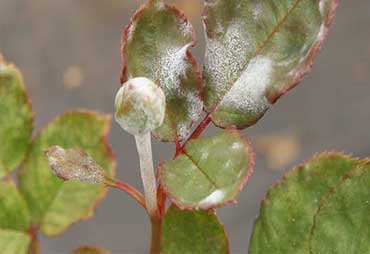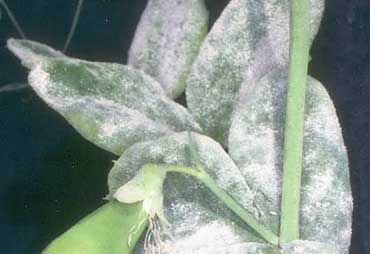






What is powdery mildew?
Powdery mildew can be found on a wide variety of crops. Some of the most commonly affected crops include:
Grapes: Powdery mildew is a significant problem for grapevines, affecting both leaves and fruit
Apples: Apple trees are susceptible to powdery mildew, which can impact fruit quality
Cucumbers and Squash : These cucurbit plants are often vulnerable to powdery mildew, especially in warm and humid conditions.
Roses : Ornamental roses are frequently afflicted by powdery mildew, which can damage the appearance of the plants.
Tomatoes : Tomato plants can also be affected by powdery mildew, which can lead to reduced fruit production.
Lilacs : These flowering shrubs are known to develop powdery mildew on their leaves.
Peas : Pea plants can suffer from powdery mildew, which can reduce yields.
Beans : Various types of beans, including common beans and soybeans, can be affected by powdery mildew
Hops : Hops plants, used in brewing, are susceptible to powdery mildew, which can affect the quality of hops.
Pumpkins and Melons : These crops are part of the cucurbit family and can develop powdery mildew.
Potassium phosphite is used as a fungicide to control powdery mildew and various other fungal diseases on a range of crops.
Here's how it works:
Fungicidal Properties: Potassium phosphite contains phosphorous in a different form than the phosphorus typically found in fertilizers. This form of phosphorus is effective against certain fungi. When applied to plants, it interferes with the growth and reproduction of powdery mildew fungi.
Strengthening Plant Defense: Potassium phosphite not only directly affects the fungus but also helps strengthen the plant's natural defense mechanisms. It enhances the plant's ability to resist and respond to fungal infections.
Systemic Action: Potassium phosphite can be absorbed by the plant and transported throughout its tissues. This systemic action means that even parts of the plant not directly treated with the fungicide can be protected from powdery mildew.
Reducing Spore Germination: It can inhibit the germination of fungal spores on the plant's surface, preventing the establishment and spread of powdery mildew.
Regular Application: To effectively control powdery mildew, potassium phosphite is typically applied preventively and as part of a regular spray program. The frequency of application can vary depending on the severity of the disease and the specific crop being treated.
It's important to follow recommended application rates and safety precautions when using potassium phosphite or any other fungicide. Additionally, the effectiveness of any fungicide can vary depending on the specific strain of powdery mildew and other environmental factors. Integrated pest management practices, which may include crop rotation, selecting disease-resistant plant varieties, and proper sanitation, should be considered as part of a comprehensive approach to managing powdery mildew in crops.





